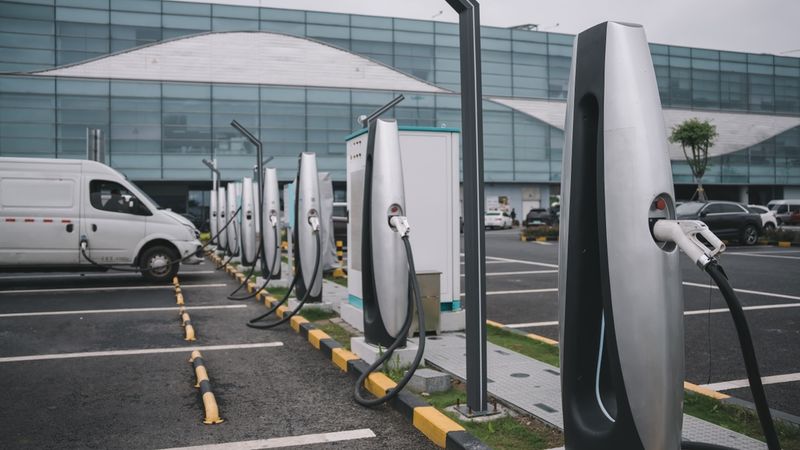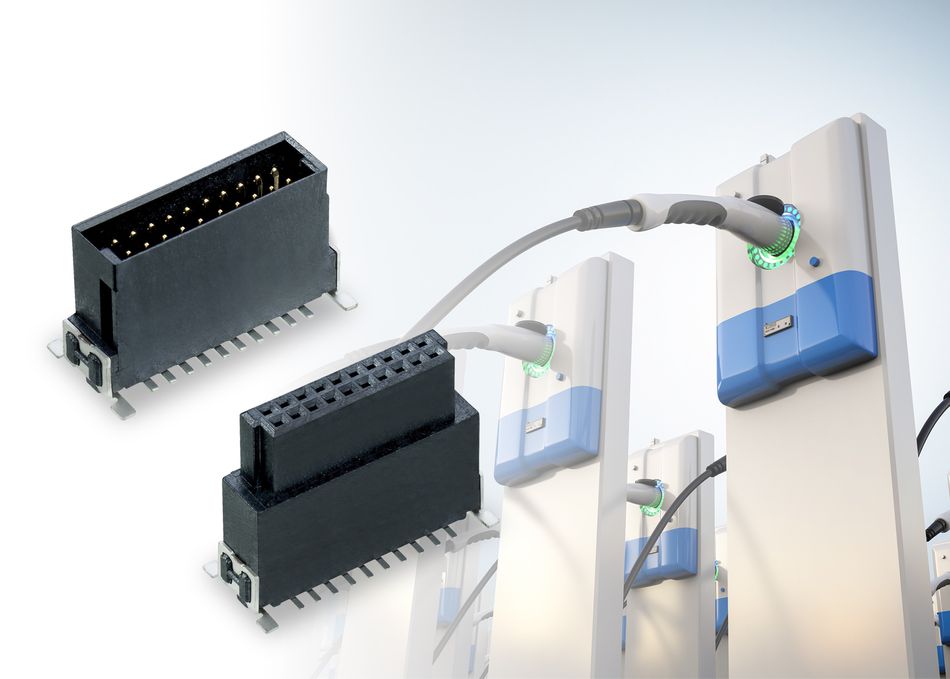Soothing Range Anxiety - The Role of Connectors in EV Charging Stations
Electric vehicles face significant barriers to their adoption. Harwin delivers connectors to help designers create the next phase of charging infrastructure.

Introduction
Electric vehicles are the fastest-growing sector of the automotive market. However, there is a risk that they may remain a niche product until they can overcome one significant challenge. To achieve widespread adoption, drivers need to overcome their range anxiety.
In common with many new technologies, electric vehicles have won support from early adopters who have acted as pioneers. These drivers are willing to accept the challenges of electric vehicle ownership, especially as the supporting infrastructure is still developing. It is this lag between the development of electric vehicles and the infrastructure that supports them that will prove to be the largest barrier for adoption by the public at large.
Making the Journey Easier
The use of gasoline as a fuel for vehicles is well established, and the infrastructure that supports it is highly developed. In most parts of the world, it is difficult to travel far before passing a filling station that allows the car to be refuelled. The process takes just a few minutes, and the range of modern vehicles means that drivers do not need to concern themselves when travelling.
In contrast, the lack of suitable charging stations in many regions complicates planning of any journey. The long distance between each station, combined with the modest range of most EVs and the time required to charge, means that any trip can become stressful. The fear of being stranded by the roadside is compounded by the difficulty of recharging an electric vehicle. A conventional vehicle can be refuelled from a small container by the roadside, but the same is not true of an EV.
Until the charging infrastructure for electric vehicles rivals that of conventional fuel sources, there will always be a reluctance amongst many drivers to adopt this new technology. To address this hesitation, vehicle manufacturers have heavily invested in fast charging technology. In addition, many governments have taken a proactive approach to developing the infrastructure needed to support widespread adoption of EVs.
A Vision of the Future
Norway provides a clear vision of what the future for EVs might look like. Government incentives have created a comprehensive network of charging stations, and a large renewable energy market means that electricity is readily available. As a result, EVs represent the most popular choice for new vehicles1. Similar initiatives around the world are improving the adoption rate of electric vehicles.
The ready availability of charging infrastructure therefore plays a significant role in the public perception of electric vehicles as a realistic alternative to fossil fuels. To ensure this, the number of charging stations available for use must expand significantly, and not just at conventional service stations. From the home to the office, in parking lots and shopping malls, these stations need to become familiar landmarks in our daily lives.
However, public acceptance depends not just on the availability of charging stations, but on their reliability and safety. Unserviceable charging stations will quickly become the source of frustration, and confidence in electric power will suffer. The charging stations therefore need to be designed with reliability in mind.
Designing for Confidence
These devices will be exposed to the elements. They must cope with harsh environmental conditions, whatever the weather. They must work flawlessly in extreme temperatures, as well as wind, rain and direct sunlight. Charging stations will also be handled by consumers. They must deliver safe and user-friendly operation, even when providing the high energy required by modern vehicle batteries. This requires high levels of electrical safety and in-built monitoring.
Every electrical circuit exhibits resistance, and charging cables are no exception. While the value may be small, resistance causes some of the energy passing through to be converted into heat. The high power demanded by modern fast-charging stations causes an increase in the temperature of the charging cable. The temperature of the charging station therefore needs to be monitored to ensure safety, especially of the connector and cable. These are the components that drivers and operators will physically touch regularly.
The designers of the latest electric vehicle charging infrastructure therefore require connectivity that will deliver enhanced performance under these extreme conditions. Delivering power efficiently is vital, but so too are the systems that control current flow and monitor the status of the charging infrastructure. The connectors that support these systems are hidden from view, but their role requires them to possess the same reliability as the charging elements.
To meet the sophisticated demands of next-generation EV charging stations, reliable and rugged connectivity solutions are essential. Harwin’s Kontrol and Flecto series connectors are designed to thrive in these challenging environments. While not intended to handle the currents and voltages required to charge vehicle batteries, both series are ideal for the equipment needed to support charging and control systems.
Kontrol board-to-board and cable-to-board connectors feature a 1.27mm pitch and offer a range of stacking heights between 8mm and 20mm. This flexibility supports compact designs where space is limited. Their current rating of 1.2 Amps per contact allows for efficient power transfer while reducing heat buildup during rapid charging cycles. Their durability ensures reliable operation even in high-traffic applications.
For systems that require high-speed data, the Flecto series offers high-density interconnects that maintain signal integrity even under conditions of constant movement or vibration. With a choice of pitch options and up to 160 contacts, the Flecto series is ideal for use in embedded monitoring, diagnostics, and control electronics.
Together, these Harwin solutions help designers create safe, efficient, and user-friendly charging stations. Their reliability under harsh conditions reinforces public confidence in electric vehicles as practical options for everyday use.

Conclusion
The transition to electric vehicles depends on a reliable and widespread charging infrastructure to counter range anxiety. From domestic charging units to high-speed public stations, each system must offer safety, efficiency, and reliability. Harwin is the ideal partner, delivering low-resistance connectors that withstand the demanding conditions found in real-world applications. Their high-reliability interconnects support both power delivery and internal control systems, ensuring uninterrupted performance. As the EV market grows, components like Harwin connectors will play a pivotal role in building the confidence drivers need to adopt this transformative technology and drive the future of sustainable transportation.
